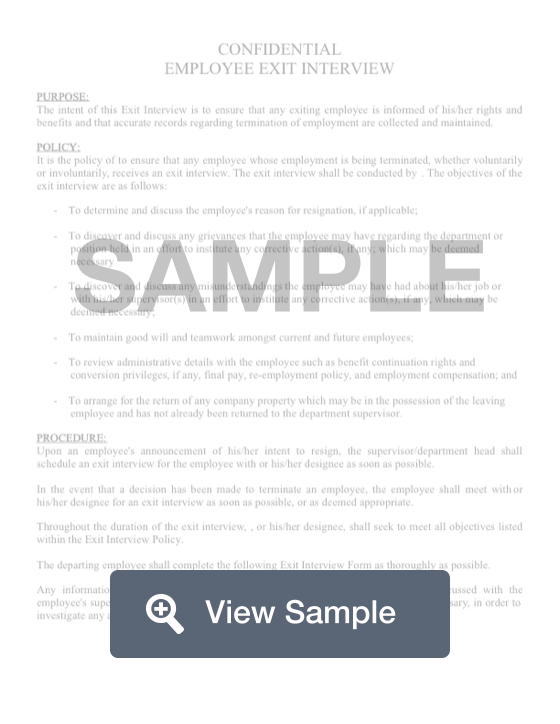What is an exit interview?
An exit interview is a meeting conducted at the end of an individual’s employment. It may be conducted with the human resources department. This interview is typically held in order to learn more about the reason the employee is leaving and what the employee liked or disliked about their job. Exit interviews are often used to help improve a company or organization and reduce their employee turnover. These surveys may also be used by educational institutions to learn more about how students view their programs.
Exit interviews can be conducted in person face-to-face, over the phone, through paperwork, on through an online media. Online surveys tend to have the highest participation rate from former employees. Exit interviews are voluntary and may only be sent to certain employees. A business or organization may find that conducting an exit interview for a short-term employee is a waste of resources and does not reveal helpful information.
Components of an exit interview template
An exit interview is a formal process conducted when an employee leaves a firm. Whether it was the employee or the employer that initiated the departure, it is customary in many firms to conduct an exit interview. Forms are available to guide an interviewer through the process. There are a few components that will recur in most cases.
Company Info
The first component is information about the company. This includes the name and the address and other customary letterhead elements. This section also features the name of the interviewer and the employee name. The former will usually be someone in HR or representing an HR function.
Description of the Position
The second component details the job position. This may be a short one sentence or bullet point summary, but it may also feature details relevant to the departure. Was there a particular skill that this position requires which is in high demand? Is the position critical to the good functioning of the firm? Does the job feature upward mobility prospects? These details should be prepared in advance to focus the interview. This component also includes details like length of term employment.
Reason for Departure
The third component may make up the bulk of the interview: the reason for leaving. Was the person let go? Did they find a better position elsewhere? Did they feel good at their job? This section starts with the stated reason, usually brief, and leaves a lot of room for detail and feedback. Almost every free exit interview form available on HR websites will stress the importance of this phase. In practice, it comes down to what actually happens during the interview.
It can be very helpful to have an exit interview template when going through the process, as these situations can be some of the most challenging aspects of HR. A form detailing the critical aspects of the job position can help structure the initial part of the interview. The reasons for leaving section offers an opportunity for the firm to better understand their relationship with employees. Even if let go, often factors affecting the work performance of an employee offer important lessons for both HR and corporate leadership in general.
What questions should be asked in an employee exit interview?
To make the most of the exit interview process, you should consider asking the following sample exit interview questions:
- What made you look for a new job? - You may learn about a specific incident that caused them to begin searching.
- What made you accept the new position? - If the employee tells you that they left for higher pay, you might need to increase your company’s compensation package.
- What could have been done to convince you to stay? - This will give the employee the opportunity to give feedback about what may have made a better work environment.
- If you could change one thing about the company, what would it be? - This is another way to encourage the employee to share their concerns about the company.
- How can our company improve our training and development programs? - Employees often have great suggestions about how to improve your programming and what additional development opportunities they would like to see.
- Do you feel that you were well-equipped to do your job? - Learn what you could do better for the next employee.
- Were you satisfied with your workload? - Learn if your employees feel overworked or need more stimulation.
- Were you satisfied with the way that you were managed? - Learn if there are problems with your management team that caused you to lose talent.
- Were you satisfied with your work-life balance? - Gain insight on how the employee feels about working conditions.
- Would you consider working here in the future? Under what circumstances? - Learn what it would take to get an employee to come back in the future.
- What was the best part about your job? - Learn what you are doing well.
- Is there anything else you would like to add? - A final opportunity for the employee to provide constructive feedback on their experience with your company.

